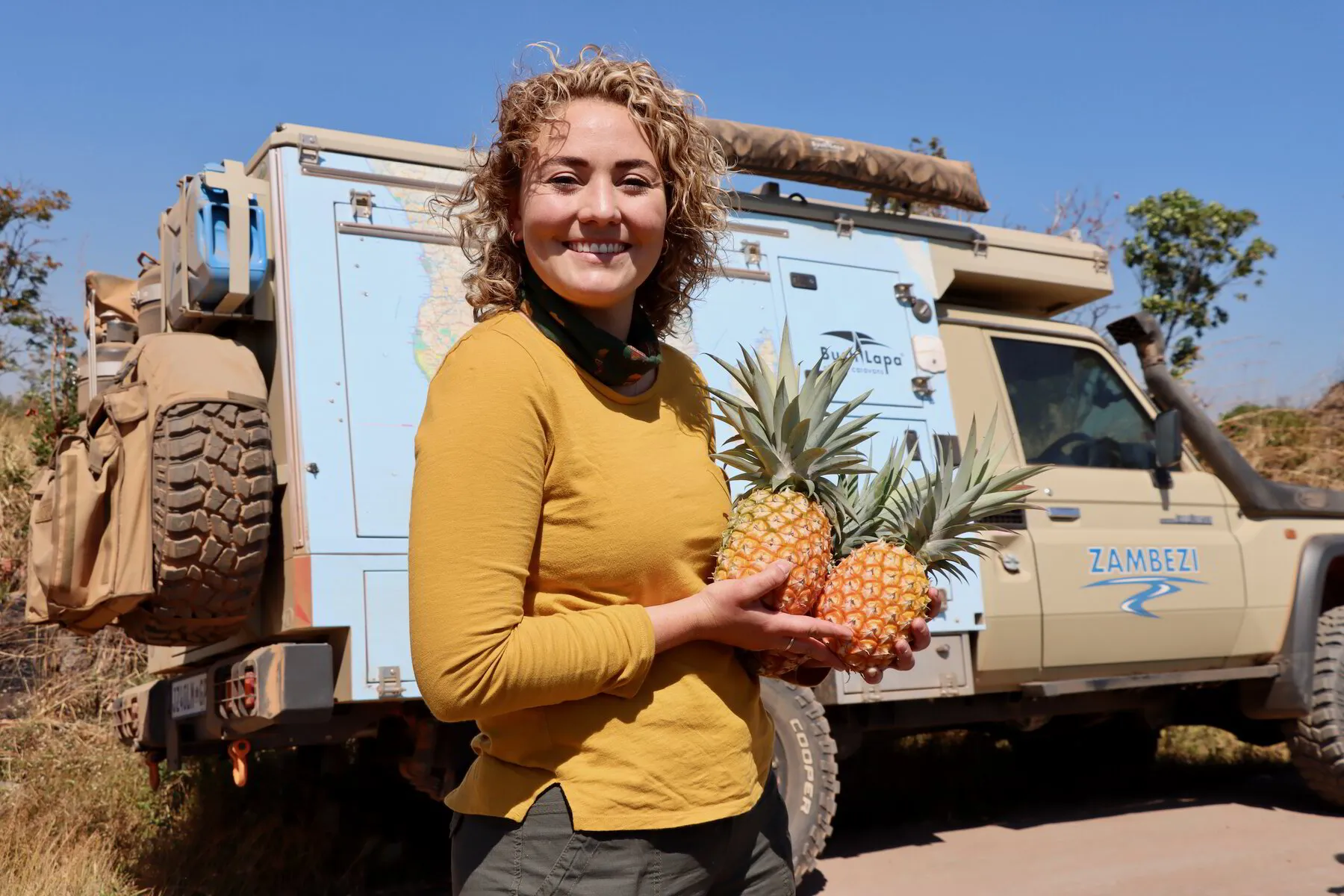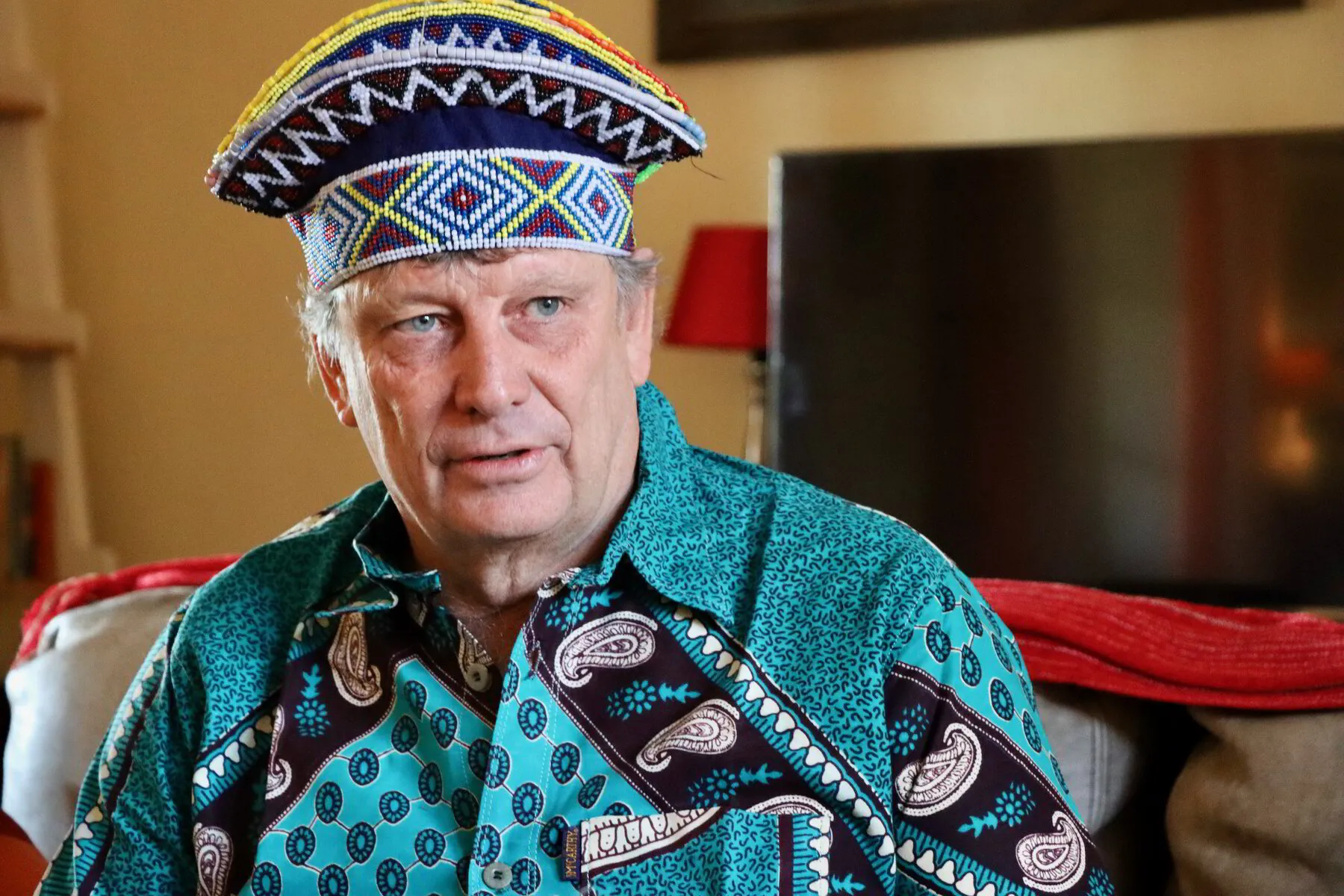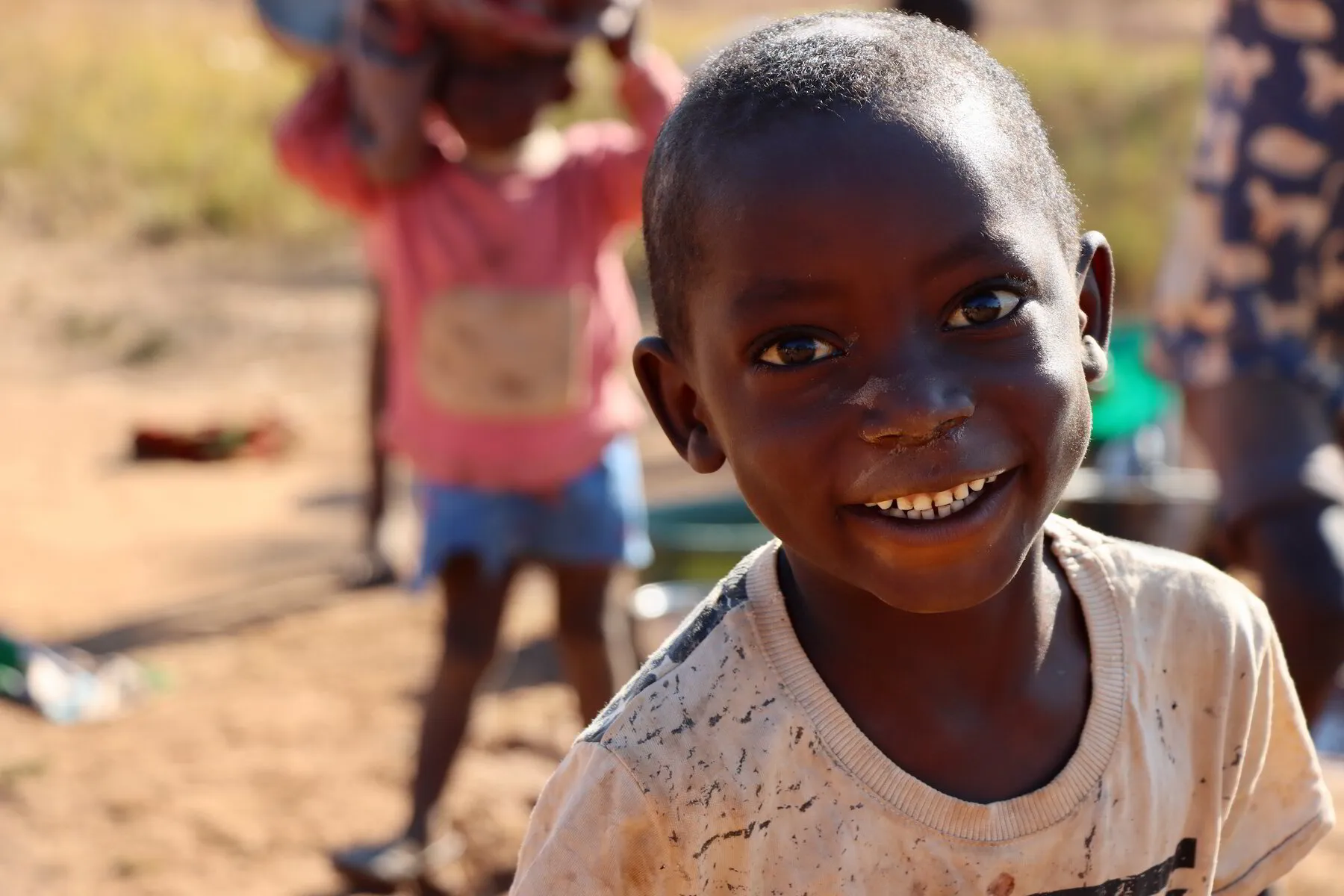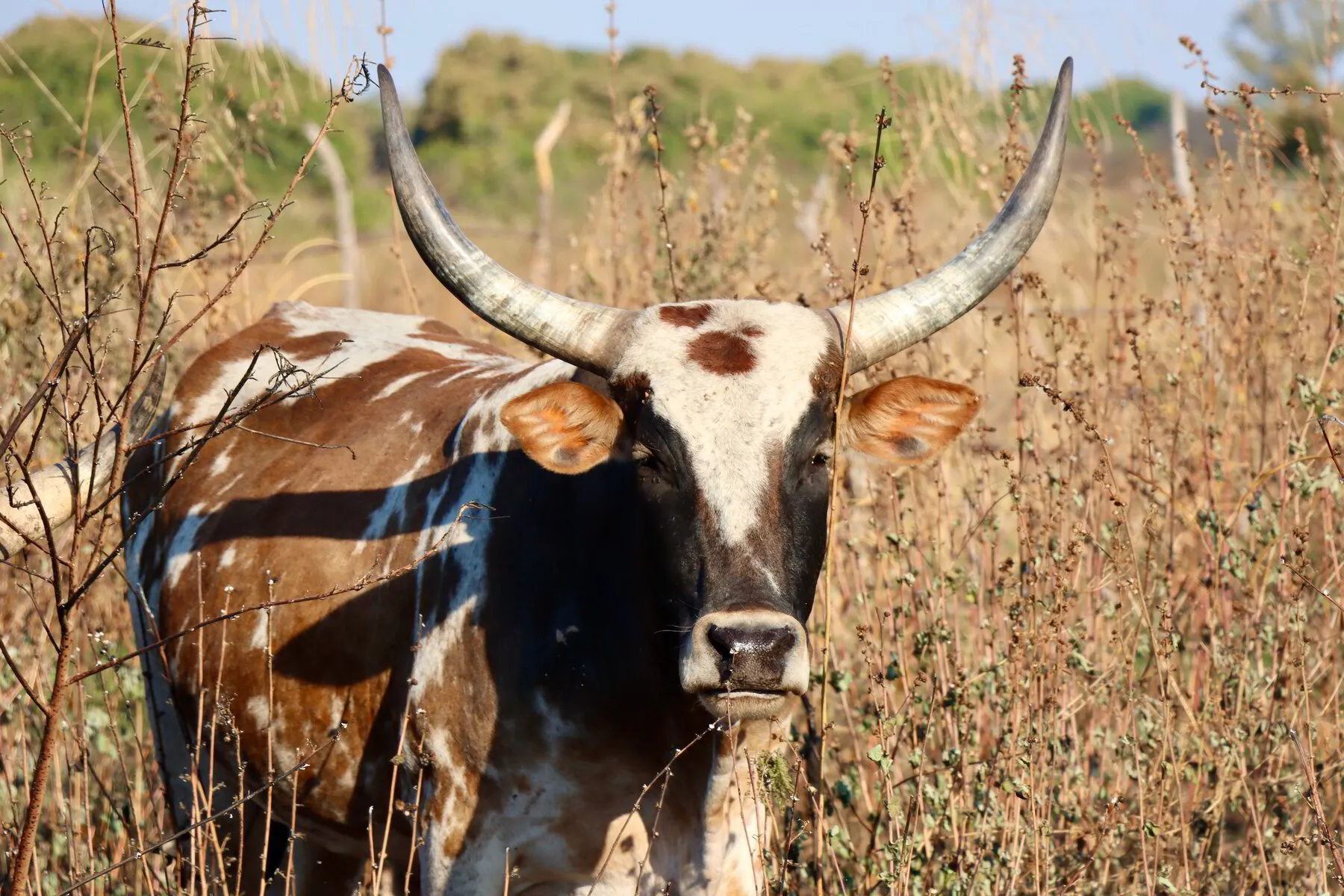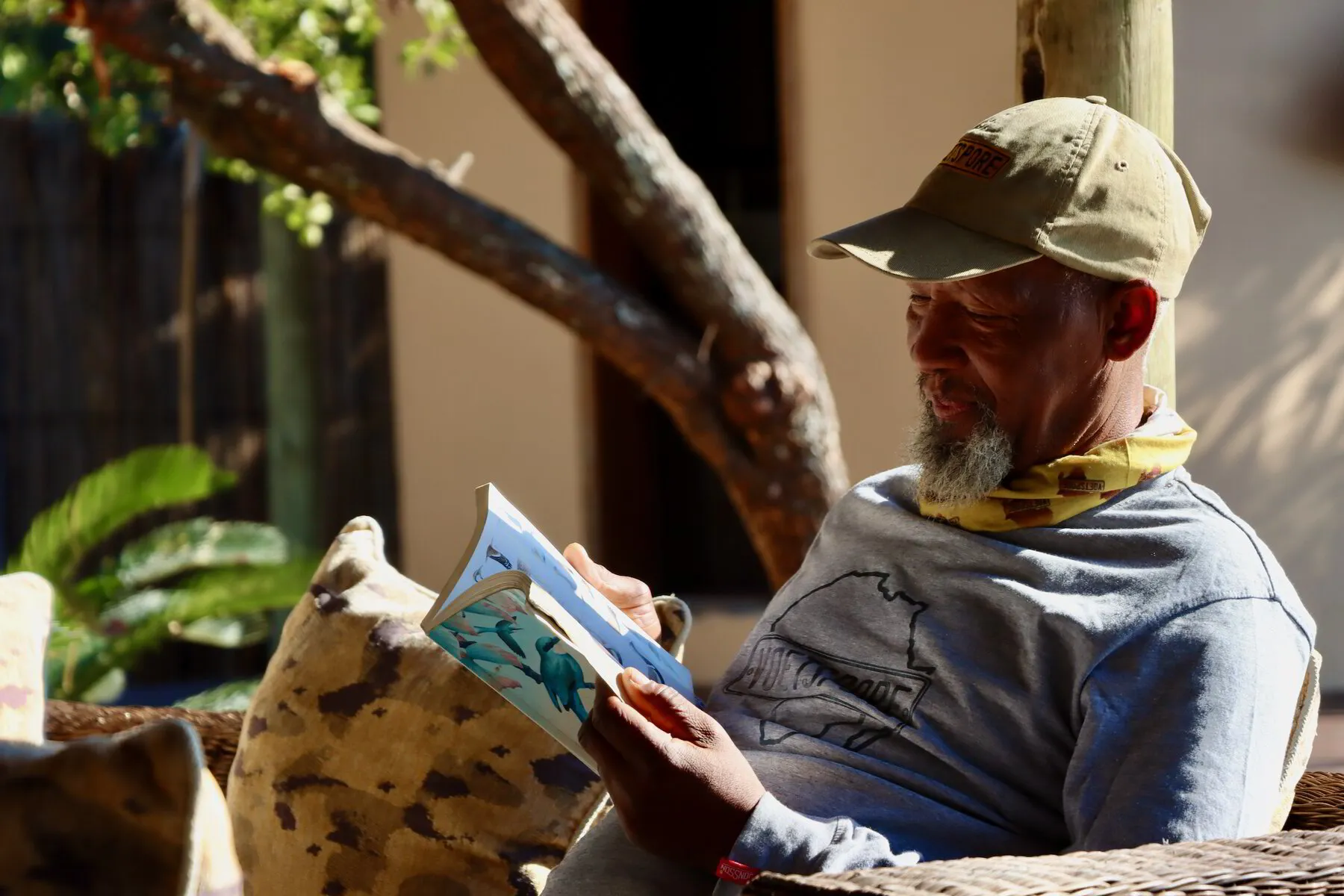OUR STORY
Zambezi Week 2
Dag 9, 6 Julie
Dag 9, 6 Julie
Pete Fisher
Die oggend nooi ons vir Pete Fisher uit vir ontbyt. Nina maak aartappel koekies en ons bedien dit met moerkoffie. Pete geniet dit baie.
Die Fishers het in die negentiende eeu in die wêreld opgedaag. Pete se oupagrootjie, Walter, was geinspireer deur David Livingstone en Fred Arnott se werk om die afskaffing van slawerny te bevestig. Dit kon alleen gedoen word deur die vestiging van die Christendom en instelling van wettige handel.
In 1889 het Walter, pas gekwalifiseer as mediese dokter, saam met sy vrou, Anna, Afrika toe gekom. Aanvanklik het hulle hulself gevestig in Portugees Wes Afrika, vandag Angola. Later het hulle geskuif van Kalene Hill, net buite die dorp Ikelenge.
Op Kalene Hill is ‘n sendinghospitaal en ook weeshuis gebou. In die weeshuis is die kinders grootgemaak, gedagtig daaraan dat hulle weer sou moes terug na ‘n tradisionele bestaan. Soortgelyk is ‘n tehuis vir ouer vroue gebou, asook ‘n skool.
Na Walter het sy seun Ffolliott, kleinseun Paul en agterkleinseun Pete voortgegaan met die werk. Erkenning aan die Fishers het gekom toe Pete aangewys is as Lunda hoofman. Hy staan bekend as Chief Mnyamana.
Pete vertel vir ons dat Lunda sy eerste taal is. Hy dink daarin en droom daarin. Dit, ten spyte daarvan dat hy in Suid Rhodesië skoolgegaan het en by Oxford ingenieurswese studeer het. Dit is fassinerend om na hom te luister soos hy die geskiedenis van sy familie, en die ontwikkeling in Zambië met ons deel.
Pete gee een van sy werkers, Tyson, vir ons om ons verder die plek te wys. Ons gaan na die eerste bruggie oor die Zambezi. Dis nou al ‘n riviertjie. Veel groter as die stroompie wat ons die vorige dag gesien het.
Tyson neem ons ook na Kalene Hill waar die Fishers oorspronklik gebly het. Op die heuwel geniet ons ‘n heerlike brood wat Norbert die oggend gebak het, met hoender mayonnaise van die vorige aand se braai. Op pad terug val beide ek en Streicher ernstig vas in die modder. Ons kry die geleentheid om al ons toerusting te toets – wenaste en kinetiese toue.
Ons gaan maak ook ‘n draai in Ikelenge.
Die aand is dit terug by die kamp. Nina maak ‘n broccoli slaai en peper sous terwyl Francois styk en wors braai.
Dit was ‘n baie interessante dag.
oOo
We invite Pete Fisher for breakfast. Nina bakes potatoes fritters and it is served with ground coffee. Pete really enjoys it.
The Fishers came to this part of the world in the 19th century. Pete’s great grandfather, Walter, was inspired by David Livingstone and Fred Arnott. They were staunch abolitionists. They believed the end of slavery would only come about by the establishment of Christianity and legitimate trade on the continent.
In 1889 Walter, who had just qualified as a surgeon, came to Africa with his wife, Anna. First, they settled in Portuguese West Africa, today Angola, but later moved to Kalene Hill, just outside what is today known as Ikengele.
On Kalene Hill a hospital was built. Later, an orphanage as well. The orphans were educated in such a way that they could later return to the traditional way of life. Walter’s wife was also responsible for the building of a home for elderly women, as well as a school. Being on top of Kalene Hill was impractical as there was no water, and they all later moved down to the plains around Ikelenge.
Walter’s son Ffolliott, grandson Paul and great-grandson Pete followed in his footsteps. Recognition for the work they did came when Pete was nominated as Lunda chief. Today he is known as Chief Nyamwana.
Pete tells us that Lunda is his first language. It is the language in which he thinks and dreams. This, in spite of the fact that he went to school in Southern Rhodesia and studied engineering at Oxford. It is fascinating to listen to him as he recalls the family history and the development of Zambia.
Pete sends one of his employees, Tyson, with us to show us around. First, we travel to the first bridge across the river. By now it is a river, and not a stream anymore. Tyson also takes us to Kalene Hill where the Fishers originally settled. This is where we have lunch – bread, baked by Norbert, and chicken salad that Nina prepared using last night’s chicken that we cooked. On the way back both Streicher and I get stuck in the mud. We have to make use of all our equipment – winches and kinetic ropes. After we got unstuck, we visit Ikelenge. Back at camp Nina prepares a broccoli salad and pepper sauce, while Francois braai steaks and boerewors. It was a very interesting day indeed.
Dag 10, 7 Julie
Dag 10, 7 Julie
Mukwa woud.
Die tweede nag by die Nchila kamp van Pete Fisher was uitstekend. Maar ons moet aan beweeg. Eerste stop is om by Pete en sy vrou Lynn te gaan koffie drink. Pete gaan trek ook sommer vir ons sy uitrusting as Lunda stamhoof aan. Dis kompleet, met ‘n kroon. Sy vrou lag so ‘n bietjie vir hom, maar hy is baie trots op wat sy familie in die hoek van Zambië vermag het. Hy staan bekend as Chief Nyamwana – Queen of Light. Vandag nog doen hulle wonderlike werk. Met ons aankoms kom Lynn juis terug van die weeshuis wat hulle oor die jare bedryf en ondersteun.
Pete wys talle foto’s van hulle as familie. Alhoewel hulle baie Westerse gebruike toepas, het die familie uit Engeland volledig Zambies geword. Daar is onder andere ook ‘n foto van familievriend Kenneth Kaunda, die oud president wat op die dag begrawe word.
Vanaf Pete en Lynn neem ons die pad, noord, na Angola. Ons sien die eerste keer die Zambezi, nie as stroompie nie, maar as rivier. Dis die tweede brug oor die Zambezi. Ons kan ongelukkig nie Angola binnegaan en die loop van die rivier volg nie. COVID 19 het die grenspos tydelik gesluit.
In die veld brand daar nog ‘n vuur. Afrika glo dis hoe jy vernuwing bring. Aan die einde van die droë seisoen word die veld gebrand. Die reën sal nuwe, groen gras laat spriet.
Op pad terug ry ons verby ‘n meule wat met sonkrag werk. Plaaslike mense bring hulle mielies om hier gemaal te word. Ons sien oral in Zambië die nuwe, blou sink geboutjies – ‘n geskenk van die huidige president.
Die roete terug loop oor Ikelenge en Mwinilunga, heuning hoofstad van Zambië. Ons koop nog Zambia Gold. Daar draai ons weg en reis na die Lukwakwa Game Management Area. Net anderkant Chibikwa gaan ons die woud binne. Dis die Mukwa woud. Zambië se cryptosepalum efoliatum. Immergroen. Daar is min oppervlakwater. Alles sypel weg in die sanderige grond.
Toe dit donker word maak ons kamp langs die pad. Mens kan nie die woud in nie, dit is te ruig. Maar dit pla nie. Daar is geen verkeer op die pad nie. Teen nege uur gaan kruip ons in.
oOo
The second night at Pete Fisher’s Nchila Camp was excellent. But it is time to move on. The first stop is for coffee with Pete and his wife Lynn. Pete also gets dressed in his Lunda Chief regalia, complete with a crown. His wife thinks it is a little funny, but he is very proud of what he and his family achieved in this corner of Zambia. He is known as Chief Nyamwana – Queen of Light. When we arrived Lynn just returned from the orphanage that the family still runs.
Pete shows us photographs of his family. They still practice Western traditions, yet this family from England became Zambian. We see, amongst others, a photograph of family friend Kenneth Kaunda, the previous president who recently died and were buried on this day.
Leaving Pete and Lynn behind, we travel north, the direction of Angola. Here, we see the Zambezi as a river for the first time, and not a stream. This is the second bridge across the Zambezi. We are not allowed to follow the river into Angola, as the border is closed because of COVID restrictions.
A veldt fire is raging near the bridge. In Africa it is believed, this is the way to renew. At the end of the dry season, the veldt is lit. When the rains come, new, green grass will sprout.
On our way back we stop at a mill, powered by solar. Locals bring their maize for milling. We see these new, blue buildings all over Zambia. It is a gift from the current president.
The route back takes us past Ikelenge and Mwinilunga, the honey capital of Zambia. We buy some of the Zambian Gold. This is where we turn off to the Lukwakwa Game Management Area. Just past Chibikwa, we enter the forest. It is the Mukwa Forest. Zambia’s cryptosepalum efoliatum. It is evergreen. There is little surface water. It all disappears into the sandy soil.
After dark, we set up camp next to the road. It is impossible to penetrate the forest. But this is no problem. There is no traffic. By nine we go to bed.
Dag 11, 8 Julie
Dag 11, 8 Julie
Reis na Chavuma
Dit was ‘n goeie nagrus in die immergroen woud. Deur die nag het daar nie een voertuig of motorfiets verby gekom nie.
Ons begin suid ry. Die pad is baie sleg. Vordering is traag. Ons sien al hoe meer bome wat afgekap word. Ge-oes word. “Rosewood”, of te wel Mukula. Uitvoere is byna uitsluitlik na Sjina. Of dit volhoubaar is, weet ons nie. Dis met baie moeite wat die reuse bome afgekap word en op vragmotors gelaai word. Die vragmotors moet die baie slegte pad suid vat.
Dis teen die middag wat ons by die teerpad, die M8, uitkom. By die kruising is daar reuse hout depots.
Ons draai regs na Zambezi. By die dorp gaan ek na die enigste ATM om geld te trek. Die masjien sluk my kaart in. Dit neem twee ure voor ek dit terugkry.
Ons ry verder na Chavuma. Michael Watson en sy vrou Renée, wat sendingwerk doen as Waymakers in Zambië, het ons genooi om by hulle te kom kamp. Hulle het ‘n pragtige kampplek wat uitkyk op die Zambezi en Chavumavalle. Ongelukkig het Michael en Renée beide ‘n paar dae vantevore COVID opgedoen. Ons kan dus nie saam kuier nie, en bloot van hulle gasvryheid gebruik maak.
Dis ‘n pragtige kampplek op die oewer van die Zambezi, wat nou reeds ‘n magtige rivier is.
oOo
We had an excellent night in the evergreen forest. No vehicle or motorbike passed us during the night.
We take the road south. The road is terrible. Progress is slow. We see more and more chopped down trees. This is the wood that is harvested. Rosewood, called Mukula in this part of the world. Export is mainly to China. If this is sustainable, it is not clear. Serious effort is needed to chop down the trees and have the trunks loaded on the lorries. The lorries then drive south with the challenging road.
At lunchtime, we reach the tar road, the M8. At the junction, there are massive wood depots.
We turn right to the town of Zambezi. In town, I go to the only ATM to withdraw money. The machine swallows my card. It takes more than two hours to have it retrieved.
We continue to Chavuma. Michael Watson and his wife Renée, missionaries for Waymakers in Zambia, invited us to camp at their place. Unfortunately, both Michael and Renée contracted COVID a few days before. We cannot come too close to them, in fear of contracting the virus, but make use of their hospitality in setting up camp on the Zambezi’s banks. By now it has become a mighty river. Mukwa woud.
Dag 12, 9 Julie
Dag 12, 9 Julie
Chavuma
Ons is vroegoggend, voor sonop, op om na die valle te kyk. Dis eintlik maar net ‘n stroomversnelling. Maar dis indrukwekkend in so ‘n magtige rivier.
Streicher en Stefan gaan dorp toe. Ons is versigtig om die hele span aan die mark bloot te stel. Michael meen sy vrou het dalk COVID in die mark opgetel.
Streicher gaan doen inkopies. Vars produkte, soos kapenta, bream, groente, bone, Sjinese blaarslaai, vrugte, avo’s ... is op die mark beskikbaar. Dis spot goedkoop. Hulle kyk ook hoe lyk die res van die dorp - sending hospitaal, die Nursing and Midwifery college, die kerk, gebou in 1927, die meule. Chavuma is ‘n tipiese Afrika dorp.
By die hawe is daar kano’s, mokoros en bote wat mense en goedere oor die rivier vervoer.
Die middag leen Michael vir ons sy boot. Francois is die skipper. Nina pak versnaperinge en drankies in. Die Voetsporespan gaan op ‘n “sundowner cruise”.
Terug by die kamp sit Streicher ‘n vark blad in die Cobb en Nina maak patat chips en ‘n heerlike slaai.
oOo
It is an early morning start to see the falls at sunrise. The falls is more rapid, yet it is impressive in the mighty river.
Streicher and Stefan go to town. We are concerned not to expose too many of the team to the dangers of Corona. Michael thinks his wife contracted the disease at the market.
Streicher does the shopping. Fresh produce, such as kapenta, bream, veggies, beans, Chinese lettuce, fruit, avos... all are available and at a very affordable price. They also visit the rest of town – the missionary hospital, the Nursing and Midwifery College, the church, built-in 1927 and the mill. Chavuma is a typical African town.
At the harbour, there are many canoes, mokoros and other boats that ship people and goods across the river.
Late afternoon Michael lends us his boat. Francois is the skipper. Nina provides the snacks and drinks. The Voetspore Team goes on a sundowner cruise.
Back at camp Streicher put a pork shoulder in the Cobb and Nina prepares sweet potato chips and a fresh salad.
Dag 13, 10 Julie
Dag 13, 10 Julie
Chinyingi brug.
Ons groet die Watsons en verlaat Chavuma. Op pad na die Zambezi, 30 km voor die dorp, draai ons af na ‘n sendingstasie. By die sendingstasie, geleë aan die weste kant van die Zambezi is daar ‘n besonderse brug.
In 1969 het Vader Crispin Valeri gesien hoe vyf mense in die rivier verdrink toe hulle bootjie omslaan. Hy het gedink daar moet ‘n ander oplossing wees om die rivier te kruis. Vir vyf jaar lank het hy gewerk aan ‘n plan. Toe, in 1974, bou hy, met behulp van die plaaslike mense, ‘n 280 meter lange hangbrug oor die rivier.
Daar is oor die lengte van die Zambezi vier brûe wat die rivier kruis sonder enige ondersteuning, afgesien van die pilare op die oewers – daar is die brug by Victoria Falls, die Otto Beit brug en die Samora Machel brug in Tete. Dan is daar Vader Crispin Valeri se voetgangersbrug. Dis ‘n wonderlike ingenieurs prestasie wat vir bykans 50 jaar mense toelaat om die rivier veilig te kruis. Dis nie ‘n brug vir hulle met hoogtevrees nie. Die brug kort ook bietjie instandhouding. Mens hoop dit gebeur spoedig. Die konstruksie moet nie toegelaat word om te vergaan nie.
Ons reis via Zambezi met die M8. By Chilikita draai ons van die groot pad af. By Watopa kruis ons die Kapomporivier, ‘n sytak van die Zambezi, met ‘n veerboot. Dis ‘n eerste vir Nina. Sy is baie opgewonde.
Dit is ‘n baie slegte pad na Lukulu. Ons arriveer net na vier. Die manne van Matoya wag vir ons. Ons bagasie word op ‘n boot gelaai, ons gaan los ons Cruisers by die plaaslike Katolieke Sending, en vaar op twee bootjies af na die pragtige plek op die oewer van die Zambezi. In die week wat kom gaan ons ‘n paar tiere uit die water trek.
oOo
We say goodbye to the Watsons and leave Chavuma. On our way to the Zambezi, 30 km before the town, we turn off the main road to visit a missionary on the western banks of the river. Here, there is an exceptional bridge.
In 1969 Farther Crispin Valery saw five people drown when their boat capsized whilst crossing the river. He spends the next five years, working on a plan to avoid a similar incident. In 1974 he built a hanging bridge with the help of the local people. They constructed the 280 m bridge across the river.
The bridge is only one of four to stretch across the Zambezi without any supports. The others are the Victoria Falls Bridge, the Otto Beit Bridge, and the Samora Machel Bridge. The fourth one is Farther Crispin Valeri’s footbridge. It is an excellent engineering marvel and has allowed pedestrians for almost 50 years to cross the Zambezi in safety. It is not a bridge for those with a fear of heights. The bridge also is in desperate need of maintenance. One hopes this will be done soon. This construction should not be allowed to perish.
We travel past the town of Zambezi with the M8. At Chilikita we leave the main road. At Watopa we cross the Kapompo river, a tributary of the Zambezi, with a ferry. This is a first for Nina. She is very excited.
The road to Lukulu is in poor condition. We arrive just after four. The team from Matoya waits for us. They load our luggage onto a boat, and we take the Cruisers to the Catholic Mission. We then get onto two boats ourselves and sail to the lodge on the banks of the Zambezi. In the coming week, we hope to catch a few tigers.
Dag 14, 11 Julie
Dag 14, 11 Julie
Afdag by Matoya
Vir die eerste keer in twee weke kry ons die kans om tot verhaal te kom. Daar is min beter plekke om dit te doen as by Matoya, suid van Lukulu, op die Zambezi. Dis administrasie, dagboek op datum kry, foto’s organiseer en ‘n bietjie rus.
More gaan ons die groot tiere uittrek.
oOo
For the first time in two weeks, we get a chance to take a break. To do this, few places are as good as Matoya, south of Lukulu, on the Zambezi. We do admin, get the dairy up to date, organise the photographs, and rest.
Tomorrow we plan to catch the big ones.

